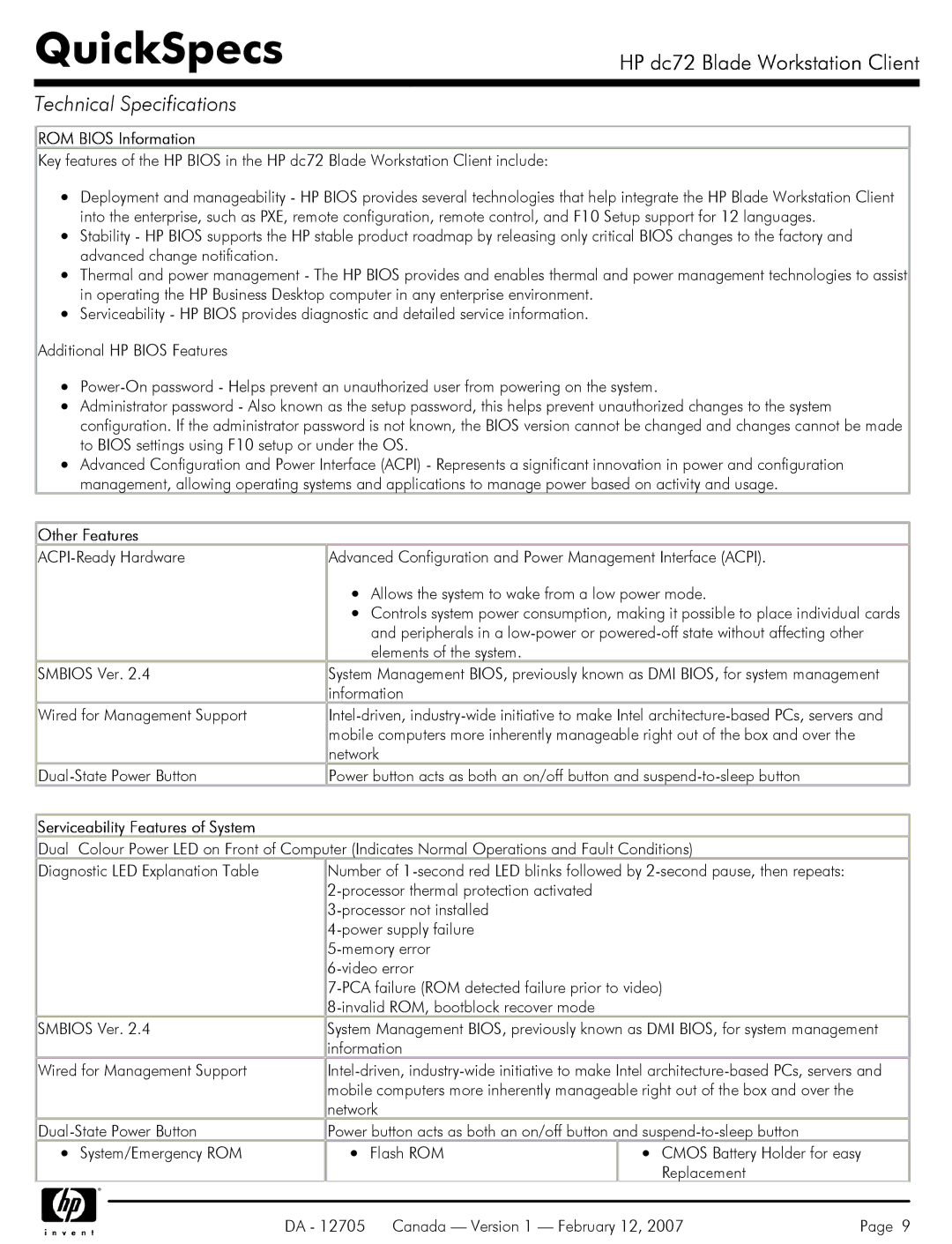
QuickSpecs
HP dc72 Blade Workstation Client
Technical Specifications
ROM BIOS Information
Key features of the HP BIOS in the HP dc72 Blade Workstation Client include:
Deployment and manageability - HP BIOS provides several technologies that help integrate the HP Blade Workstation Client into the enterprise, such as PXE, remote configuration, remote control, and F10 Setup support for 12 languages.
Stability - HP BIOS supports the HP stable product roadmap by releasing only critical BIOS changes to the factory and advanced change notification.
Thermal and power management - The HP BIOS provides and enables thermal and power management technologies to assist in operating the HP Business Desktop computer in any enterprise environment.
Serviceability - HP BIOS provides diagnostic and detailed service information.
Additional HP BIOS Features
Administrator password - Also known as the setup password, this helps prevent unauthorized changes to the system configuration. If the administrator password is not known, the BIOS version cannot be changed and changes cannot be made to BIOS settings using F10 setup or under the OS.
Advanced Configuration and Power Interface (ACPI) - Represents a significant innovation in power and configuration management, allowing operating systems and applications to manage power based on activity and usage.
Other Features
Advanced Configuration and Power Management Interface (ACPI).
Allows the system to wake from a low power mode.
Controls system power consumption, making it possible to place individual cards and peripherals in a
SMBIOS Ver. 2.4
System Management BIOS, previously known as DMI BIOS, for system management information
Wired for Management Support
![]() Power button acts as both an on/off button and
Power button acts as both an on/off button and
Serviceability Features of System
Dual Colour Power LED on Front of Computer (Indicates Normal Operations and Fault Conditions)
Diagnostic LED Explanation Table
Number of
SMBIOS Ver. 2.4
System Management BIOS, previously known as DMI BIOS, for system management information
Wired for Management Support
System/Emergency ROM
![]() Power button acts as both an on/off button and
Power button acts as both an on/off button and
Flash ROM | CMOS Battery Holder for easy |
| Replacement |
|
|
|
|
| DA - 12705 Canada — Version 1 — February 12, 2007 | Page 9 | |
